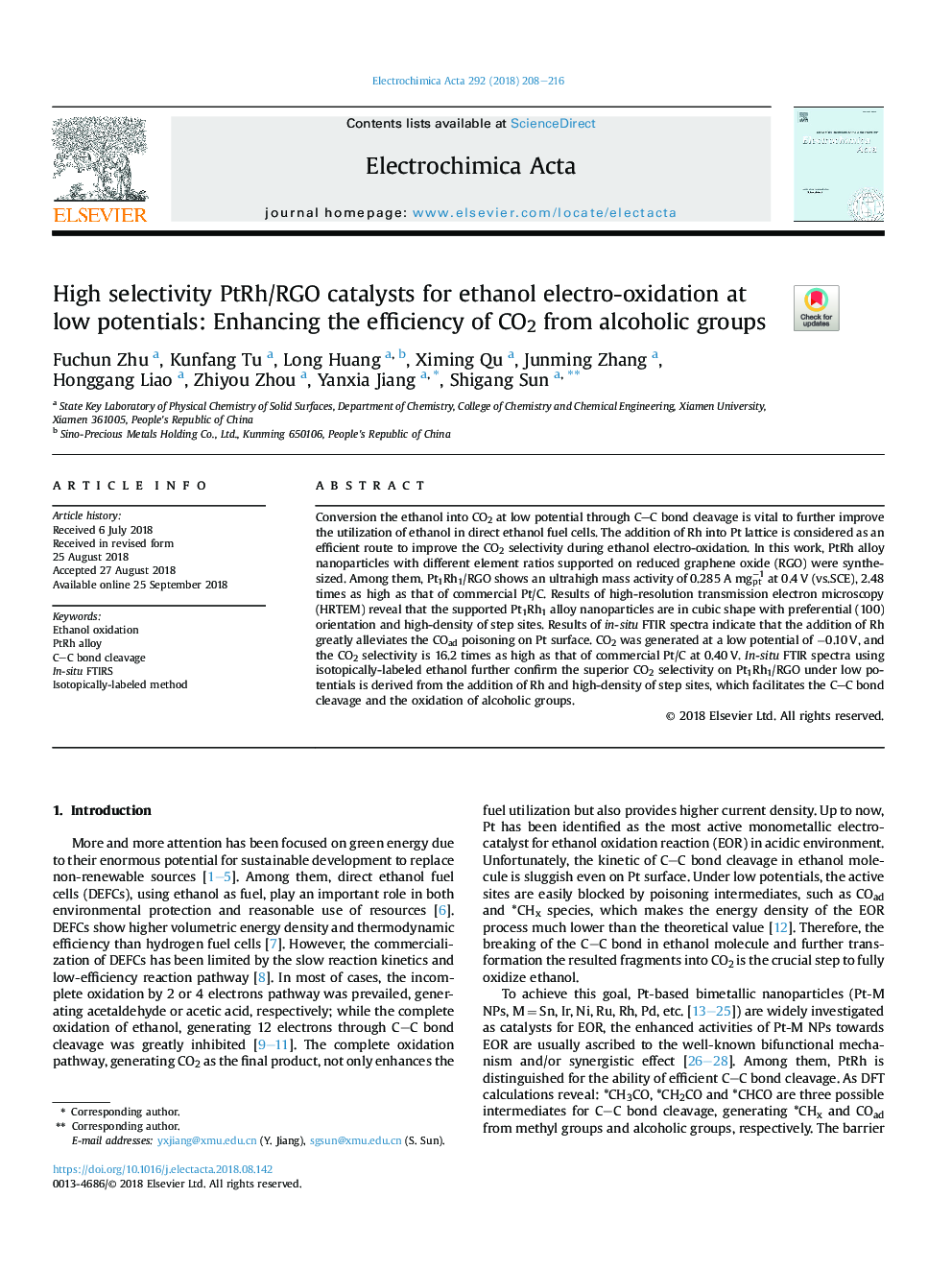| Article ID | Journal | Published Year | Pages | File Type |
|---|---|---|---|---|
| 10656882 | Electrochimica Acta | 2018 | 9 Pages |
Abstract
Conversion the ethanol into CO2 at low potential through CC bond cleavage is vital to further improve the utilization of ethanol in direct ethanol fuel cells. The addition of Rh into Pt lattice is considered as an efficient route to improve the CO2 selectivity during ethanol electro-oxidation. In this work, PtRh alloy nanoparticles with different element ratios supported on reduced graphene oxide (RGO) were synthesized. Among them, Pt1Rh1/RGO shows an ultrahigh mass activity of 0.285 A mgptâ1 at 0.4â¯V (vs.SCE), 2.48 times as high as that of commercial Pt/C. Results of high-resolution transmission electron microscopy (HRTEM) reveal that the supported Pt1Rh1 alloy nanoparticles are in cubic shape with preferential (100) orientation and high-density of step sites. Results of in-situ FTIR spectra indicate that the addition of Rh greatly alleviates the COad poisoning on Pt surface. CO2 was generated at a low potential of â0.10â¯V, and the CO2 selectivity is 16.2 times as high as that of commercial Pt/C at 0.40â¯V. In-situ FTIR spectra using isotopically-labeled ethanol further confirm the superior CO2 selectivity on Pt1Rh1/RGO under low potentials is derived from the addition of Rh and high-density of step sites, which facilitates the CC bond cleavage and the oxidation of alcoholic groups.
Keywords
Related Topics
Physical Sciences and Engineering
Chemical Engineering
Chemical Engineering (General)
Authors
Fuchun Zhu, Kunfang Tu, Long Huang, Ximing Qu, Junming Zhang, Honggang Liao, Zhiyou Zhou, Yanxia Jiang, Shigang Sun,
